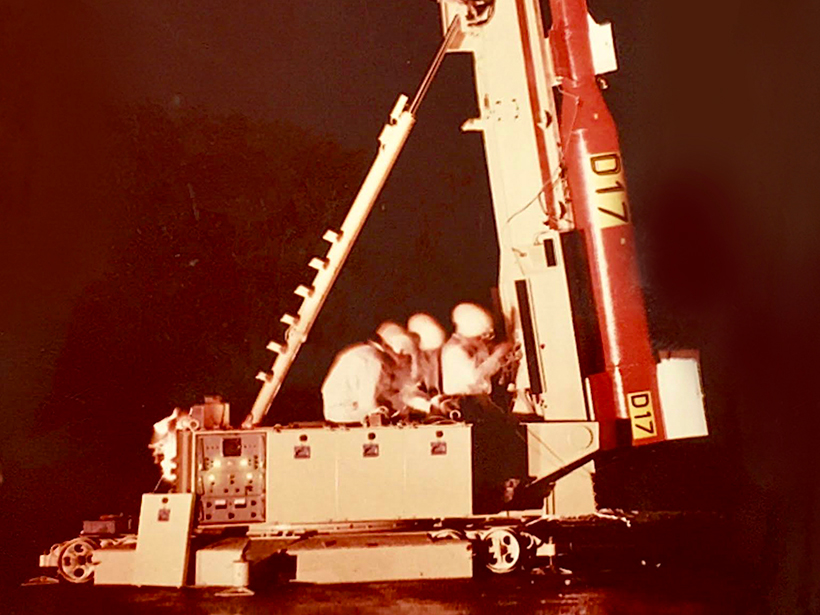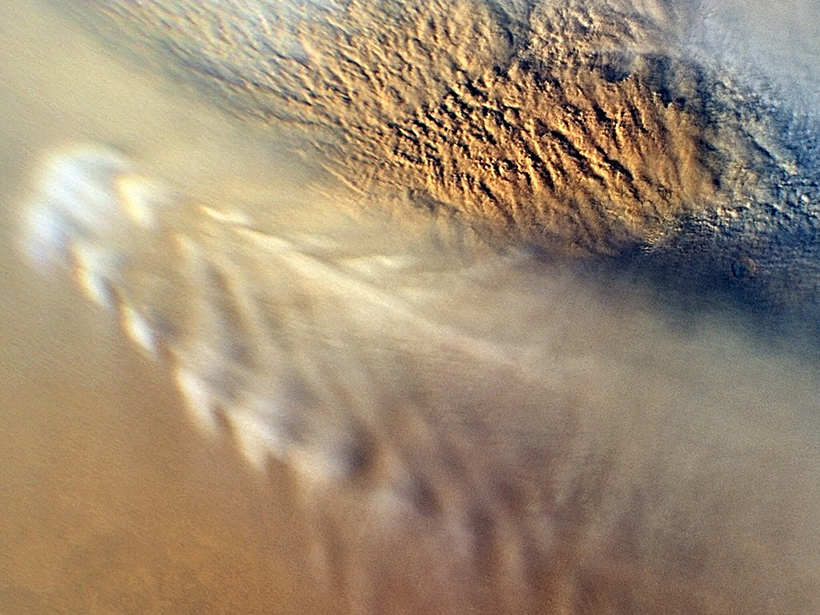New calculations show that lightning-triggered plasma waves in Earth's magnetosphere absorb energy from slow particles and energize electrons to levels that can damage satellites severely.
Mark Zastrow
Eos Freelance Writer
After Decades, High-Altitude Observations Revived at Jicamarca
Recent upgrades to the Jicamarca Radio Observatory in Peru allow it to probe electron densities several thousand kilometers above Earth, a feat it hasn't accomplished in 50 years.
Plasma Waves Pinpointed at the Site of Magnetic Reconnection
When the Earth's and the Sun's magnetic fields meet, they realign in explosive and mysterious reconnections. Data suggest that plasma waves called kinetic Alfvén waves play a key role.
Martian Mantle Models Pave the Way for NASA's InSight Lander
The most detailed simulations to date of how heat flows through Mars's interior are good news for the upcoming lander and will help scientists interpret its data.
Retracing the First Spaceborne Electric Field Measurement
Fifty years ago, a sounding rocket made history by taking the first measurement of an electric field in space. What techniques were used to capture this data?
Buzzing Ice Shelf Makes Waves in the Air Above
The resonant vibrations of the Ross Ice Shelf in Antarctica are disturbing the atmosphere above it, creating huge ripples.
Mars's Atmosphere Matches Earth's Turbulent Nature
Mars is even more like Earth than we thought, according to a statistical analysis of the planet's swirling atmosphere.
Jupiter's Auroras Recharge Between Solar Storms
New research suggests that Jupiter's magnetic field replenishes its stock of plasma during lulls in solar activity, creating spectacular displays when a solar storm hits.
Your Phone, Tablet, and Computer Screens Aren't Safe from Hackers
Cables and circuitry inside your gadgets' screens act as accidental antennae that broadcast screens' contents. A new study says the industry needs to fix this security risk before hackers exploit it.
Venus's Unexpected, Electrifying Water Loss
New research shows that an electric field surrounding Venus is stripping its atmosphere of water—and the same phenomenon may plague exoplanets scientists hope might be habitable.










